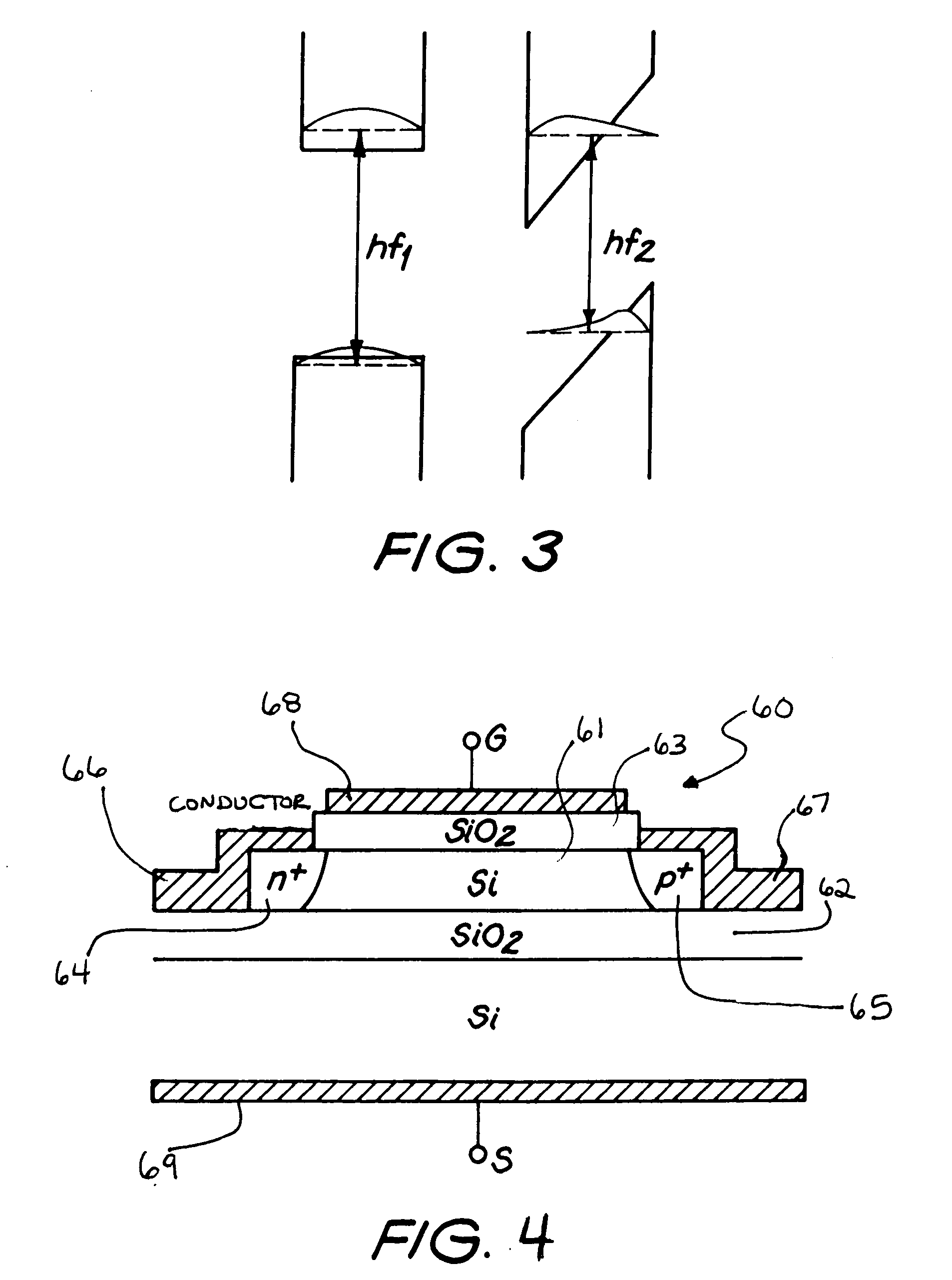High efficiency silicon light emitting device and modulator
a light-emitting device, high-efficiency technology, applied in semiconductor devices, instruments, optics, etc., can solve the problems of inability to integrate leds into silicon devices, low conversion efficiency of silicon leds, and inability to meet the requirements of silicon devices
- Summary
- Abstract
- Description
- Claims
- Application Information
AI Technical Summary
Benefits of technology
Problems solved by technology
Method used
Image
Examples
Embodiment Construction
An edge emitting silicon device 10 in accordance with the present invention is shown in FIG. 1. This device makes use of a buried dielectric silicon oxide layer 12 that is an easily obtainable feature when using silicon-on-insulator (SOI) technology. The advantage of this approach is the small device cross sections that are possible, the excellent light confinement prospects possible due to the high refractive index step between the silicon layer 11 and the dielectric layers 12 and 13, generally silicon dioxide, and the suitability for incorporation into standard silicon integrated circuits.
If the top silicon layer 11 is less than about 200 nm thick, as is normally the case for SOI technology, only a single optical waveguide mode can be supported by the layer 11 shown in FIG. 1 in the longitudinal direction into the page (ie normal to the page). Modern lithographic methods allow similar control over lateral dimensions. Minority carrier diffusion lengths in the n+ doped region 14 ...
PUM
| Property | Measurement | Unit |
|---|---|---|
| thickness | aaaaa | aaaaa |
| thickness | aaaaa | aaaaa |
| quantum efficiency | aaaaa | aaaaa |
Abstract
Description
Claims
Application Information
 Login to View More
Login to View More - R&D
- Intellectual Property
- Life Sciences
- Materials
- Tech Scout
- Unparalleled Data Quality
- Higher Quality Content
- 60% Fewer Hallucinations
Browse by: Latest US Patents, China's latest patents, Technical Efficacy Thesaurus, Application Domain, Technology Topic, Popular Technical Reports.
© 2025 PatSnap. All rights reserved.Legal|Privacy policy|Modern Slavery Act Transparency Statement|Sitemap|About US| Contact US: help@patsnap.com



